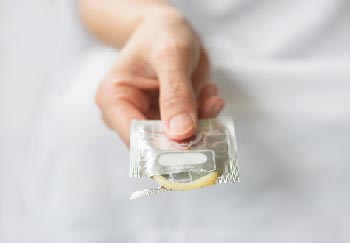
In my high school health classes in the late 1990s, we learned about sexually transmitted diseases (STDs) such as HIV, gonorrhea and genital herpes. But syphilis never came up. That may be because early-stage syphilis rates dropped significantly in the U.S. in the 1990s, reaching their lowest in 2001.
Now the story is changing: In 2016, healthcare providers reported 88,042 new diagnoses of this STD, including 27,814 in the early stages, making syphilis prevention something we all need to start talking about now.
Syphilis Transmission & Symptoms
February is National Condom Month, a chance to educate people about STD prevention. Here’s what you need to know about syphilis:
- It spreads through direct contact with a syphilis lesion, including during childbirth (congenital syphilis) and vaginal, anal or oral sexual contact.
- Although the majority of those early-stage cases in 2016 were among men who have sex with men, rates also increased among heterosexual people.
- The first symptom is a raised and painless lesion that gradually breaks down to form an ulcer with raised edges.
- Syphilis symptoms may disappear for years, but the infection remains in your body.
Worried about STDs?
Learn more and get treatment for chlamydia, HPV and other common STDs.
Left untreated, syphilis can ultimately lead to blindness, nervous system damage or even death, although this is rare in developed countries. If a pregnant woman transmits syphilis to her unborn baby, the baby may be stillborn or die shortly after birth, according to the CDC. The baby may also develop serious problems soon after birth if the syphilis isn’t treated.
STD & Syphilis Prevention
According to the American Sexual Health Association, one in two sexually active persons will get an STD by age 25. Don’t assume your partner is clean just because you don’t see symptoms.
The only way to completely avoid getting an STD is to abstain from sex. Otherwise, always use a condom during any sexual contact, especially if you’re unsure of your partner’s status.
Get condom how-to instructions and other information from the American Sexual Health Association.

